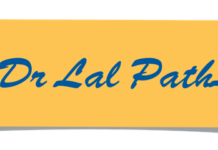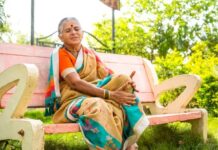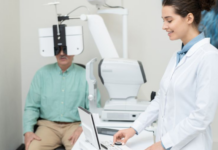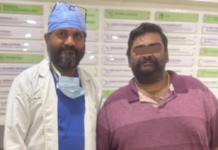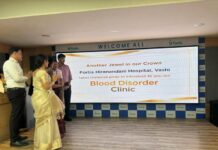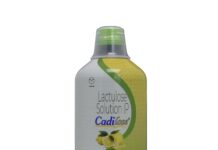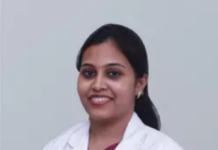Vascular Diseases Awareness Month September 2020
By Dr Narendranadh Meda Consultant Vascular & Endovascular Surgeon KIMS Hospitals, Sec-bad.
The understanding of vascular disease and its effect on our lives, by the general public, is often poor. According to a study only 20 % people were aware of vascular disease. Half of them were not aware that diabetes and smoking can increase risk of vascular disease. Only 14% knew that PVD could lead to amputation. The public is not aware that PAD imposes a high short-term risk of heart attack, stroke, and death.
To promote vascular awareness and to educate people regarding the disease, prevention and lifestyle modifications September is promoted as vascular awareness month.
Vascular disease is the collective term for diseases of the arteries, veins and lymphatics. Every part of the body to which blood flows can be affected by it. It’s as common as cancer and heart disease and accounts for 40% of deaths worldwide, many of which are preventable.
There are 100,000 miles of blood vessels in the adult human body. Any problem along this vast network of blood vessels – the vascular system – can cause severe pain, disability and death.
Everyone is at risk for vascular disease. With the increase in obesity and Type II diabetes in Indians and as the population ages, vascular diseases are becoming epidemic. It can occur in anyone at any time; affecting men and women equally.
Most of us are familiar with heart disease and with the consequences of blockages in the vessels that carry blood to and from the heart. But few realize that blockages caused by a build-up of plaque and cholesterol affect more than coronary arteries. Arteries throughout the body carry oxygen-rich blood away from the heart, so blockages can occur in all arteries with serious effects. Three of the most recognized vascular diseases include:
The most common vascular diseases are stroke, peripheral artery disease (PAD), abdominal aortic aneurysm (AAA), carotid artery disease (CAD), arteriovenous malformation (AVM), critical limb-threatening ischemia (CLTI), pulmonary embolism (blood clots), deep vein thrombosis (DVT), chronic venous insufficiency (CVI), and varicose veins.
Most commons vascular problems encountered in day today life include
Carotid Artery Disease – Stroke
Carotid arteries occur when the main blood vessels to the brain develop a buildup of plaque caused by atherosclerosis, or hardening of the arteries. When the buildup becomes very severe, it can cause a stroke. A stroke occurs when part of the brain is damaged by these vascular problems; in fact, 80 percent of strokes are “ischemic strokes” where part of the circulation to the brain is cut off, usually due to blockages in the carotid arteries. The process is similar to the buildup of plaque in arteries in the heart that causes heart attacks. Strokes are the third leading cause of death.
LEARN ABOUT CAD LEARN ABOUT STROKE
Peripheral Arterial Disease
Peripheral arterial disease (PAD) occurs when atherosclerosis, or hardening of the arteries, causes a buildup of plaque in the blood vessels that carry oxygen and nutrients to all the tissues of the body. As these plaques worsen, they reduce essential blood flow to the limbs and can even cause complete blockages of the arteries. Early on, PAD may only cause difficulty walking, but in its most severe forms, it can cause painful foot ulcers, infections, and even gangrene, which could require amputation. People with PAD are three times more likely to die of heart attacks or strokes than those without PAD.
Abdominal Aortic Aneurysm
Abdominal Aortic Aneurysm (AAA) is an enlargement or “bulge” that develops in a weakened area within the largest artery in the abdomen. The pressure generated by each heartbeat pushes against the weakened aortic wall, causing the aneurysm to enlarge. If the AAA remains undetected, the aortic wall continues to weaken, and the aneurysm continues to grow. Eventually, the aneurysm becomes so large, and its wall so weak, that rupture occurs. When this happens there is massive internal bleeding, a situation that is usually fatal. The only way to break this cycle is to find the AAA before it ruptures.
PREVENTION
The best way to try to prevent vascular diseases is to maintain a healthy, active lifestyle:
- If you are a smoker, quit smoking.
- Work to control your blood pressure, cholesterol, and glucose levels.
- Eat a healthy, low-fat diet, including lots of fruits and vegetables.
- Maintain a healthy weight and avoid weight gain as you age.
- Get plenty of regular exercise.
- Control and reduce stress.
Deep vein thrombosis:
Deep vein thrombosis (DVT) occurs when a blood clot (thrombus) forms in one or more of the deep veins in your body, usually in your legs. Deep vein thrombosis can cause leg pain or swelling, but also can occur with no symptoms.
Deep vein thrombosis can develop if you have certain medical conditions that affect how your blood clots. It can also happen if you don’t move for a long time, such as after surgery or an accident, or when you’re confined to bed.
Deep vein thrombosis can be very serious because blood clots in your veins can break loose, travel through your bloodstream and lodge in your lungs, blocking blood flow (pulmonary embolism).
Chronic venous insufficiency / varicose veins:
Varicose veins are twisted, enlarged veins. Any superficial vein may become varicose, but the veins most commonly affected are those in your legs. That’s because standing and walking upright increases the pressure in the veins of your lower body.
For many people, varicose veins and spider veins a common, mild variation of varicose veins are simply a cosmetic concern. For other people, varicose veins can cause aching pain and discomfort. Sometimes varicose veins lead to more-serious problems like bleeding, skin thickening and ulcers. Treatment may involve self-care measures like stocking usage or procedures by your doctor to close or remove veins.
Lymphedema:
Lymphedema refers to swelling that generally occurs in one of your arms or legs. Sometimes both arms and both legs swell.
In our country we can see it as a complication of filariasis, but has come down significantly due to diligent use of anthelminthic drugs. Now lymphedema is most commonly caused by the removal of or damage to your lymph nodes as a part of cancer treatment. It results from a blockage in your lymphatic system, which is part of your immune system. The blockage prevents lymph fluid from draining well, and the fluid build-up leads to swelling.
While there is presently no cure for lymphedema, it can be managed with early diagnosis and diligent care of your affected limb
Diabetic foot:
A diabetic foot is any pathology that results directly from peripheral arterial disease (PAD) and/or sensory neuropathy affecting the feet in diabetes mellitus; it is a long-term (or “chronic”) complication of diabetes mellitus.
Diabetes, peripheral nerve dysfunction can be combined with peripheral artery disease (PAD) causing poor blood circulation to the extremities (diabetic antipathy). Around half of patients with a diabetic foot ulcer have co-existing PAD.
When wounds take a long time to heal, infection may set in, spreading to bones and joints, and lower limb amputation may be necessary. Foot infection is the most common cause of non-traumatic amputation in people with diabetes.
Due to advance peripheral nerve dysfunction associated with diabetes (diabetic neuropathy), patients’ feet have a reduced ability to feel pain. This means that minor injuries may remain undiscovered for a long while, and hence may progress to a full-thickness diabetic foot ulcer
People with diabetes are at increased risk of foot infections. You can protect your feet with these simple foot care guidelines:
- Inspect and wash your feet daily. Look for redness, swelling, cuts, and blisters and nail problems. When washing your feet, use lukewarm water and dry gently, especially between the toes.
- Wear clean, dry socks and properly fitting shoes.
- Don’t go barefoot.
- Trim your toenails carefully. Cut the nails straight across. You might want to have this task done professionally, especially if you have thickened nails, vision impairment or numbness in your feet.
Corporate Comm India (CCI Newswire)



